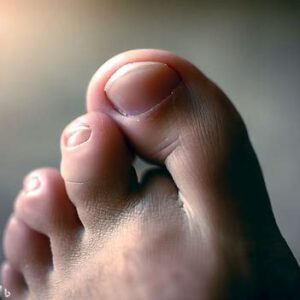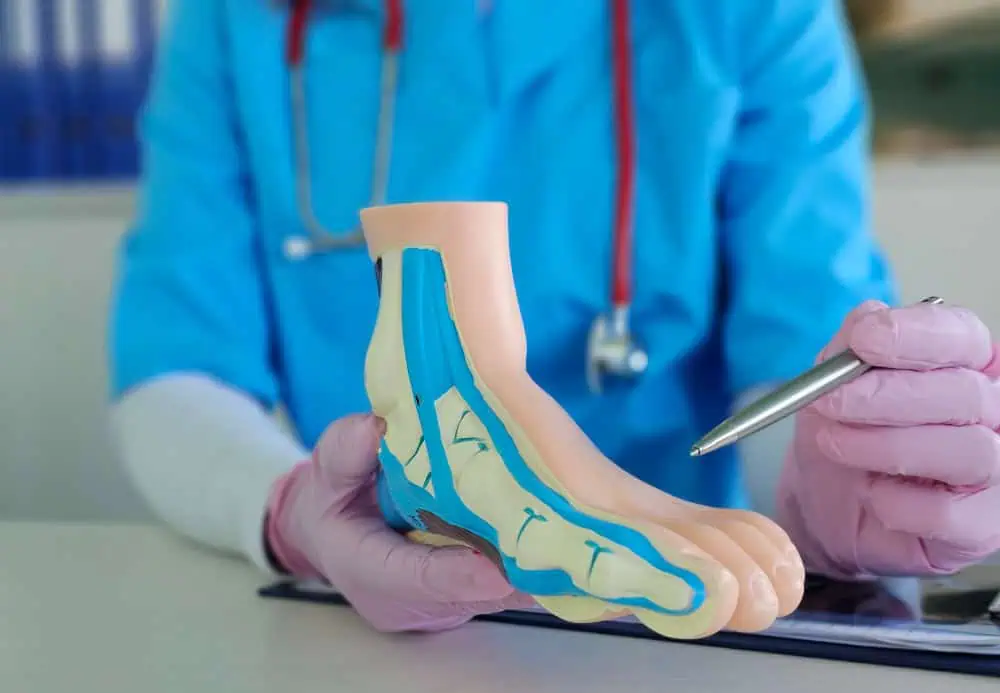
Welcome to our comprehensive guide on plantar plate tears of the foot. In this article, we will provide you with detailed information about plantar plate tears, including their causes, symptoms, diagnosis, and treatment options. As experts in the field, we aim to help you better understand this condition and offer insights into managing and treating plantar plate tears effectively.
What is a Plantar Plate Tear?
A plantar plate tear is a common injury that affects the plantar plate, a strong ligamentous structure located in the ball of the foot. This ligament provides stability and support to the toes, preventing them from excessive upward or downward movement. When the plantar plate becomes damaged or torn, it can lead to pain, instability, and a variety of foot problems.
Causes and Risk Factors
Plantar plate tears can occur due to various factors and activities that put stress on the ligament. Some common causes and risk factors include:
- Repetitive Overuse: Engaging in activities that involve repetitive motions or excessive pressure on the ball of the foot, such as running or jumping, can increase the risk of plantar plate tears.
- Foot Structure Abnormalities: Certain foot structural abnormalities, such as high arches or hammertoes, can contribute to the development of plantar plate tears.
- Footwear Choices: Wearing ill-fitting shoes or high heels that put excessive pressure on the ball of the foot can increase the risk of plantar plate tears.
- Age and Gender: Plantar plate tears are more commonly seen in middle-aged individuals and women.
- Trauma: Direct trauma or injury to the foot, such as stubbing the toes or dropping a heavy object on the foot, can cause a plantar plate tear.
Symptoms and Diagnosis
The symptoms of a plantar plate tear can vary depending on the severity of the injury. Some common signs and symptoms include:
- Pain in the ball of the foot, typically under the affected toe(s)
- Swelling and inflammation in the area
- Instability or feeling of “walking on a lump”
- Difficulty wearing certain shoes, especially those with narrow toe boxes
- Development of corns or calluses under the affected toe(s)
If you suspect you have a plantar plate tear, it is important to consult a healthcare professional for an accurate diagnosis. A doctor will typically perform a physical examination, review your medical history, and may order additional tests, such as imaging studies (X-ray, MRI, or ultrasound), to confirm the diagnosis and assess the extent of the injury.
Treatment Options
Treatment for plantar plate tears aims to relieve pain, promote healing, and restore foot function. The treatment approach may vary depending on the severity of the tear and individual circumstances. Here are some common treatment options:
1. Conservative Treatment
For mild to moderate plantar plate tears, conservative treatments may be effective in promoting healing and reducing symptoms. These can include:
- Rest and Modification of Activities: Avoiding activities that exacerbate pain and stress on the foot can aid in the healing process.
- Icing: Applying ice packs to the affected area can help reduce inflammation and alleviate pain.
- Pain Medications: Nonsteroidal anti-inflammatory drugs (NSAIDs) or over-the-counter pain relievers may be recommended to manage pain and reduce inflammation.
- Physical Therapy: Specific exercises and stretches can help strengthen the foot muscles, improve stability, and support the healing process.
2. Immobilization
In some cases, immobilization of the foot may be necessary to allow the plantar plate tear to heal properly. This can involve:
- Wearing a Brace or Walking Boot: A supportive brace or walking boot may be prescribed to limit movement, provide stability, and protect the injured foot during the healing process.
3. Orthotic Devices
Custom orthotic devices, such as arch supports or shoe inserts, can help redistribute pressure on the foot and provide additional support to the plantar plate, aiding in the healing process and preventing further injury.
4. Corticosteroid Injection
Corticosteroid injections may be considered for the temporary relief of pain and inflammation associated with plantar plate tears. However, it is important to note that repeated corticosteroid injections may weaken the plantar plate and increase the risk of further damage.
5. Surgical Intervention
In cases where conservative treatments fail to provide relief or for severe plantar plate tears, surgical intervention may be recommended. The surgical approach may involve repairing or reconstructing the damaged plantar plate, addressing any associated structural abnormalities, and restoring foot function.
Frequently Asked Questions
Q: Can a plantar plate tear heal on its own? A: Mild plantar plate tears may have the potential to heal on their own with conservative treatments and proper rest. However, severe tears often require medical intervention.
Q: How long does it take to recover from a plantar plate tear? A: Recovery time can vary depending on the severity of the tear and the chosen treatment approach. Mild tears may take several weeks to heal, while more severe tears may require months of recovery.
Q: Can plantar plate tears be prevented? A: While it may not be possible to completely prevent plantar plate tears, there are preventive measures that can reduce the risk, such as wearing appropriate footwear, using custom orthotics, and avoiding excessive stress on the foot.
Q: Is surgery always necessary for a plantar plate tear? A: Surgery is typically reserved for severe cases of plantar plate tears that do not respond to conservative treatments. Most cases can be effectively managed with non-surgical approaches.
Q: Can I continue exercising with a plantar plate tear? A: It is important to consult with a healthcare professional regarding the appropriate level of activity and modifications needed during the healing process. Some low-impact exercises may be permitted, while high-impact activities should be avoided.
Q: Will a plantar plate tear lead to long-term complications? A: With proper diagnosis and treatment, the majority of plantar plate tears can be effectively managed, and long-term complications can be minimized. However, untreated or recurring tears may lead to chronic pain and instability.
Conclusion
In conclusion, plantar plate tears of the foot can cause pain, instability, and discomfort. Early diagnosis and appropriate treatment are crucial in promoting healing and restoring foot function. We have explored the causes, symptoms, diagnosis, and treatment options associated with plantar plate tears. If you suspect you have a plantar plate tear, seek medical attention for proper evaluation and personalized treatment. With the right approach, you can effectively manage this condition and get back on your feet.




